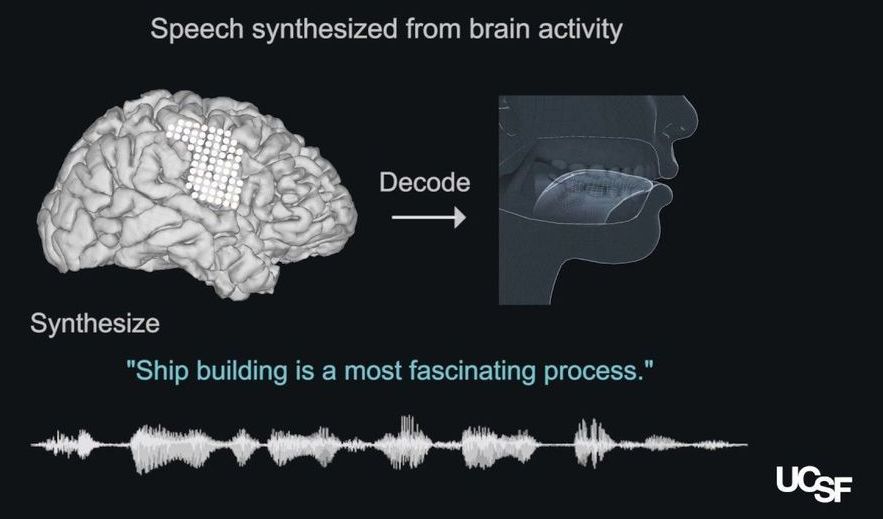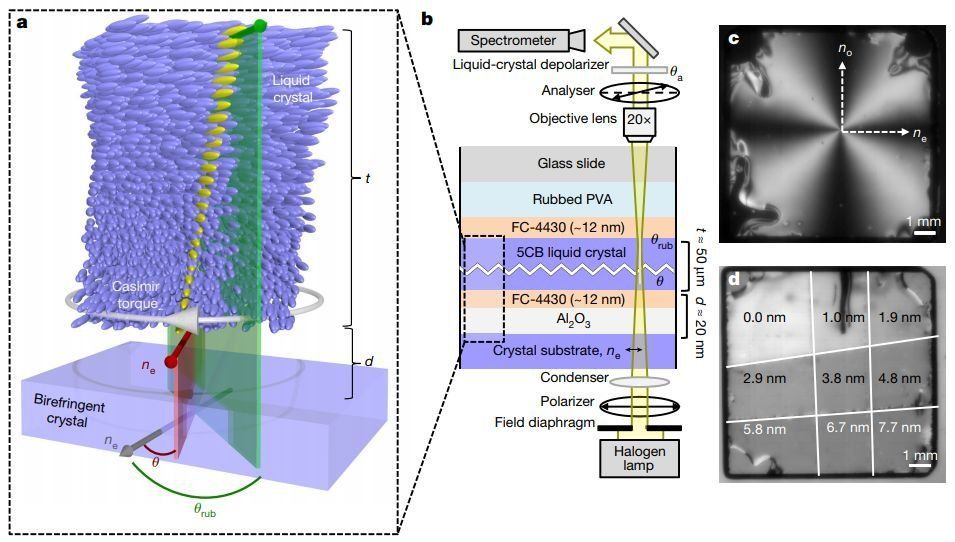Page 8909
Apr 24, 2019
Researchers use machine-learning system to diagnose genetic diseases
Posted by Quinn Sena in categories: biotech/medical, genetics, robotics/AI
Researchers at Rady Children’s Institute for Genomic Medicine (RCIGM) have utilized a machine-learning process and clinical natural language processing (CNLP) to diagnose rare genetic diseases in record time. This new method is speeding answers to physicians caring for infants in intensive care and opening the door to increased use of genome sequencing as a first-line diagnostic test for babies with cryptic conditions.
“Some people call this artificial intelligence, we call it augmented intelligence,” said Stephen Kingsmore, MD, DSc, President and CEO of RCIGM. “Patient care will always begin and end with the doctor. By harnessing the power of technology, we can quickly and accurately determine the root cause of genetic diseases. We rapidly provide this critical information to intensive care physicians so they can focus on personalizing care for babies who are struggling to survive.”
A new study documenting the process was published today in the journal Science Translational Medicine. The workflow and research were led by the RCIGM team in collaboration with leading technology and data-science developers —Alexion, Clinithink, Diploid, Fabric Genomics and Illumina.
Continue reading “Researchers use machine-learning system to diagnose genetic diseases” »
Apr 24, 2019
This Brainless Slime Learns And Remembers
Posted by Quinn Sena in category: neuroscience
O.o its prob gonna eat me someday :0.
Slime mould might easily be one of the strangest life forms on our planet. They are neither plants, animals, nor fungi, but various species of complex, single-celled amoebas of the protist kingdom. Sometimes they form colonies able to grow, move, and even exhibit a strange kind of intelligence.
Even without a nervous system, they are able to learn about substances they encounter, retaining that knowledge and even communicating it to other slime moulds. Now a team of scientists at the French National Centre for Scientific Research (CNRS) has figured out how: slime moulds actually absorb the substance into their veins.
Continue reading “This Brainless Slime Learns And Remembers” »
Is our take on the next-generation tandem-duct platform. Flying up to 10 feet off the ground at 45 miles per hour, the Aero-X is a surface-effect craft that rides like a motorcycle — an off road vehicle that gets you off the ground.
The Aero-X can be adapted for a variety of uses: surveying, search and rescue, border patrol, disaster relief, agricultural, ranching, rural transportation and…
Because it responds to your movements just as a motorcycle would, the Aero-X is intuitive to fly. And as it is built with very few moving parts, its cost of ownership is a fraction of even the most basic airplane or helicopter.
Apr 24, 2019
Researchers dramatically clean up ammonia production and cut costs
Posted by Quinn Sena in categories: energy, food
Ammonia—a colorless gas essential for things like fertilizer—can be made by a new process which is far cleaner, easier and cheaper than the current leading method. UTokyo researchers use readily available lab equipment, recyclable chemicals and a minimum of energy to produce ammonia. Their Samarium-Water Ammonia Production (SWAP) process promises to scale down ammonia production and improve access to ammonia fertilizer to farmers everywhere.
In 1900, the global population was under 2 billion, whereas in 2019, it is over 7 billion. This population explosion was fueled in part by rapid advancements in food production, in particular the widespread use of ammonia-based fertilizers. The source of this ammonia was the Haber-Bosch process, and though some say it’s one of the most significant achievements of all time, it comes with a heavy price.
The Haber-Bosch process only converts 10 percent of its source material per cycle so needs to run multiple times to use it all up. One of these source materials is hydrogen (H2) produced using fossil fuels. This is chemically combined with nitrogen (N2) at temperatures of about 400–600 degrees Celsius and pressures of about 100–200 atmospheres, also at great energy cost. Professor Yoshiaki Nishibayashi and his team from the University of Tokyo’s Department of Systems Innovation hope to improve the situation with their SWAP process.
Continue reading “Researchers dramatically clean up ammonia production and cut costs” »
Apr 24, 2019
Liquid crystals in nanopores produce a surprisingly large negative pressure
Posted by Quinn Sena in categories: cosmology, particle physics, quantum physics
Negative pressure governs not only the Universe or the quantum vacuum. This phenomenon, although of a different nature, appears also in liquid crystals confined in nanopores. At the Institute of Nuclear Physics of the Polish Academy of Sciences in Cracow, a method has been presented that for the first time makes it possible to estimate the amount of negative pressure in spatially limited liquid crystal systems.
At first glance, negative pressure appears to be an exotic phenomenon. In fact, it is common in nature, and what’s more, occurs on many scales. On the scale of the Universe, the cosmological constant is responsible for accelerating the expansion of spacetime. In the world of plants, attracting intermolecular forces (not: expanding thermal motions) guarantee the flow of water to the treetops of all trees taller than ten metres. On the quantum scale, the pressure of virtual particles of a false vacuum leads to the creation of an attractive force, appearing, for example, between two parallel metal plates (the famous Casimir effect).
“The fact that a negative pressure appears in liquid crystals confined in nanopores was already known. However, it was not known how to measure this pressure. Although we also cannot do this directly, we have proposed a method that allows this pressure to be reliably estimated,” says Dr. Tomasz Rozwadowski from the Institute of Nuclear Physics of the Polish Academy of Sciences (IFJ PAN) in Cracow, the first author of a publication in the Journal of Molecular Liquids.
Continue reading “Liquid crystals in nanopores produce a surprisingly large negative pressure” »
Apr 24, 2019
The Casimir torque: Scientists measure previously unexamined tiny force
Posted by Quinn Sena in categories: computing, engineering, quantum physics
Researchers from the University of Maryland have for the first time measured an effect that was predicted more than 40 years ago, called the Casimir torque.
When placed together in a vacuum less than the diameter of a bacterium (one micron) apart, two pieces of metal attract each other. This is called the Casimir effect. The Casimir torque—a related phenomenon that is caused by the same quantum electromagnetic effects that attract the materials—pushes the materials into a spin. Because it is such a tiny effect, the Casimir torque has been difficult to study. The research team, which includes members from UMD’s departments of electrical and computer engineering and physics and Institute for Research in Electronics and Applied Physics, has built an apparatus to measure the decades-old prediction of this phenomenon and published their results in the December 20th issue of the journal Nature.
“This is an interesting situation where industry is using something because it works, but the mechanism is not well-understood,” said Jeremy Munday, the leader of the research. “For LCD displays, for example, we know how to create twisted liquid crystals, but we don’t really know why they twist. Our study proves that the Casimir torque is a crucial component of liquid crystal alignment. It is the first to quantify the contribution of the Casimir effect, but is not the first to prove that it contributes.”
Continue reading “The Casimir torque: Scientists measure previously unexamined tiny force” »
Apr 24, 2019
There Are Toxic Fungi in Space and No One Knows If They’re Dangerous
Posted by Quinn Sena in categories: health, space
Apr 24, 2019
The Enovate ME-S is a fully electric Chinese supercar
Posted by Quinn Sena in category: futurism
This is a Chinese supercar concept. It is called the ME Sports (ME-S for short), and arrives from a new company called Enovate. When it finally sees the light of production in the year 2021, it plans on going really, really fast.
Like, 0-62mph in around three seconds, fast. And doesn’t it look sweet?
Speaking to TopGear.com at this year’s Shanghai motor show, an Enovate spokesperson said that because the company is shiny and new, it wanted to make something ‘iconic’.
Continue reading “The Enovate ME-S is a fully electric Chinese supercar” »
Apr 24, 2019
Scientists Unveil a ‘Brain Decoder’ That Turns Neural Activity Into Speech
Posted by Quinn Sena in categories: biological, information science, neuroscience

The spoken word is a powerful tool, but not all of us have the ability to use it, either due to biology or circumstances. In such cases, technology can bridge the gap — and now that gap is looking shorter than ever, with a new algorithm that turns messages meant for your muscles into legible sounds.
Converting the complex mix of information sent from the brain to the orchestra of body parts required to transform a puff of air into meaningful sound is by no means a simple feat.
Continue reading “Scientists Unveil a ‘Brain Decoder’ That Turns Neural Activity Into Speech” »

















